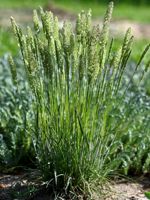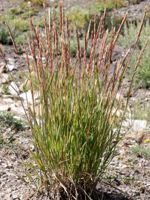Mon-Fri 9am - 5pm Mountain time
Junegrass vs Slender Wheatgrass
Koeleria macrantha
Elymus trachycaulus
NOT AVAILABLE THIS SEASON - MIGHT RETURN
CUSTOM GROW
Junegrass is a native, low-growing perennial bunchgrass commonly found in prairies and open woodlands. It is a great choice for prairie restoration and naturalization projects or an attractive accent in ornamental plantings. Spear-shaped seed heads rise above the gray-green lower leaves, maturing to a tan color. Flowering earlier than other upright prairie grasses, it greens up quickly in spring and maintains its appeal well into the fall. It is shorter in stature and rarely forms thick stands, which adds to its understated visual appeal.
Adapted to cooler climates, Junegrass thrives in well-drained, rocky, sandy, or gritty soils and can tolerate drought, cold, and high altitudes. It actively grows in spring and fall when soil temperatures are cool, but in areas that are too hot or humid, it may go dormant by late summer.
As a perennial, it dies back to the crown each winter, it will regrow from the base in the spring. Avoid disturbing the crown during late winter to ensure healthy growth the following season.
Slender Wheatgrass is a native perennial bunchgrass common across North America. It establishes quickly, making it effective for site recovery.
It produces upright seed heads that provide seasonal interest and seed for wildlife, and favoured for browsing by elk and sheep. Its seeds are eaten by birds and small mammals, and it provides cover for wildlife.
Slender Wheatgrass is among the first native grasses used for reclamation in western Canada and the U.S. It does exceptionally well in saline soils.

